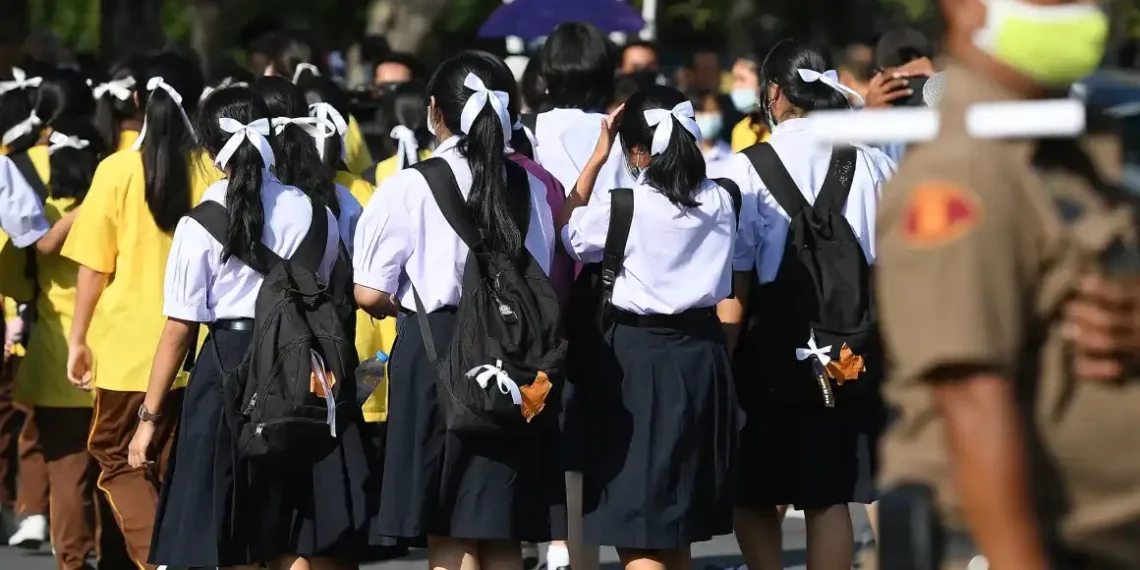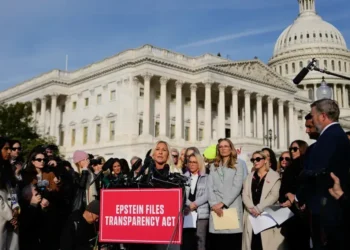After 50 Years, Thailand Loosens Strict Rules on Students’ Hair Lengths
Thailand has taken a significant step in loosening long-standing rules about students’ appearances, with the country’s highest administrative court striking down a directive that required strict hair regulations for students, in place since 1975. This marks a major victory for students and activists who have campaigned for greater personal freedom in schools.
A Rigid Tradition Comes to an End
For decades, Thai students, especially boys, were required to maintain an army-style crew cut, while girls had to sport short, ear-length bobs. The rules were enforced so strictly that even a few centimeters over the limit could result in embarrassing punishment. Students faced severe consequences for any deviation from the set standards, with some even subjected to public humiliation.
One such student, Khao Klong (now 20, studying at university), remembers the shame of being singled out for his hair being “too long” in high school. “It made me feel insecure, like I was being made into a joke,” he recalls of the day he was forced to have his hair shaved in front of the entire school.
A Turning Point: Court Ruling and Public Outcry
The oppressive hairstyle rule has been an emblem of Thailand’s conservative, hierarchical culture — and its military-influenced education system. But in March, after decades of protests and complaints from students, the administrative court ruled that these regulations were unconstitutional. The court stated that they “imposed excessive restrictions on personal freedom” and violated the Thai Constitution. Moreover, the ruling emphasized the negative impact such policies had on students’ mental health, particularly those with diverse gender identities.
This decision followed the country’s student-led protests in 2020, which called for more personal freedoms in schools, including the right to express themselves through their appearances. These protests were part of a larger movement that challenged Thailand’s military-backed government and its rigid norms.
Changing Times, Changing Rules
The court’s decision is being welcomed by many students, including 16-year-old Nijchaya Kraisriwattana, who remembers the stress of weekly hair checks. “We used to have academic points deducted for minor things like my hair being a little too long,” she says. But now, the rules feel “more relaxed,” she notes.
However, not all students are convinced that real change is happening. Some worry that individual schools will still impose harsh rules despite the court ruling, leaving students with little recourse. Khao Klong, who once led protests for student rights, points out that the battle isn’t over just because the law has changed. “We haven’t seen much change yet,” he says.
A Glimpse of the Past: Military Influence and Conformity
The strict dress codes were a reflection of Thailand’s long-standing military influence and its desire to cultivate disciplined, obedient citizens. The rules were implemented during a military dictatorship in the 1970s, a time when authoritarianism shaped much of Thailand’s social and political systems.
For years, this rigid structure has extended beyond haircuts, enforcing strict uniform requirements — even down to the exact type of socks students could wear. Khao Klong remembers how teachers would beat students for perceived “discipline” issues, a practice that was widespread in his school years.
Despite protests in 2013 that slightly relaxed the rules, the dress code remained a hotly contested issue until 2020, when student-led movements called for broader reforms to the education system. These protests were influenced by the larger pro-democracy movement that challenged the military-drafted constitution and called for more freedoms.
Student Activism and the Road Ahead
During these protests, students adopted symbols of resistance, including the three-finger salute made famous by the Hunger Games films, to show their defiance. One striking moment came when students shaved their heads in protest, as a symbol of rejecting outdated norms.
Now, with the court ruling officially declaring the hairstyle rules unconstitutional, activists like Khao Klong are hopeful that the push for more student rights will gain further momentum. However, he and others stress that the real work lies in ensuring that schools respect this newfound freedom and allow students to shape their own identities without fear of punishment.
Khao Klong’s activism was sparked by his own painful experience of being publicly humiliated, but he remains determined to keep fighting for students’ rights to this day. “We haven’t stopped fighting for freedom, we’ve just been distracted by life,” he says. “The memory of that feeling of being oppressed still lingers, and we won’t forget it.”
Looking Forward
While the court ruling is a significant step forward, educational experts like Thunhavich Thitiratsakul caution that change must be implemented carefully. Schools now need to engage with communities and reconsider their rules. But the question remains: Will students have a seat at the table?
As this issue continues to unfold, many students like Nijchaya hope for even greater freedoms, like the ability to wear T-shirts and jeans. “Yes, absolutely,” she says when asked if she wants more freedom in her clothing. The struggle for personal expression and freedom continues, but Thailand’s students have now taken a bold step toward rewriting the rules.
This article was rewritten by JournosNews.com based on verified reporting from trusted sources. The content has been independently reviewed, fact-checked, and edited for accuracy, neutrality, tone, and global readability in accordance with Google News and AdSense standards.
All opinions, quotes, or statements from contributors, experts, or sourced organizations do not necessarily reflect the views of JournosNews.com. JournosNews.com maintains full editorial independence from any external funders, sponsors, or organizations.
Stay informed with JournosNews.com — your trusted source for verified global reporting and in-depth analysis. Follow us on Google News, BlueSky, and X for real-time updates.













